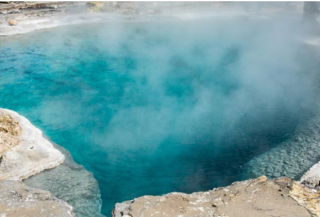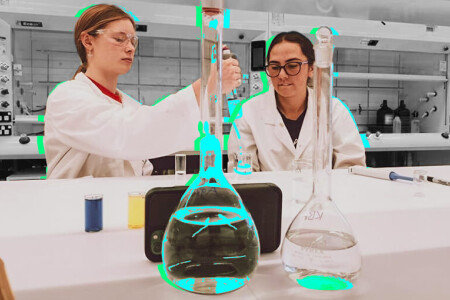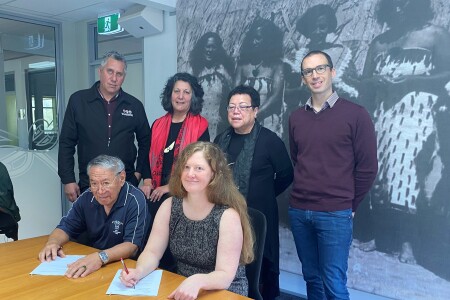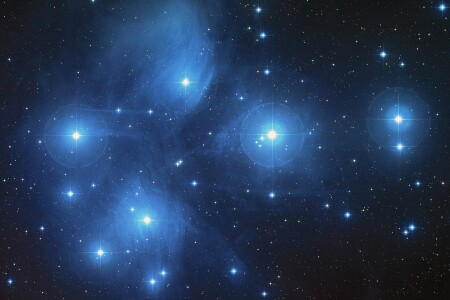Sustainable Resource Use - Pūtaiao Māori Research Programme

The Pūtaiao Māori Research Programme explores new and innovative knowledge, materials, techniques, approaches and tools to explore and grow pūtaiao Māori. This programme has environmental sustainability as a key value/principle at its core, through kaitiakitanga. The programme intersects with several other research programmes where we explore and develop pūtaiao Māori at the interface.
As we move into Tranche 2 (2025-2028), we will:
- Use pūtaiao Māori science for environmental remediation
- Explore energy and sustainability in Māori communities
- Develop building techniques and materials in Aotearoa and the Pacific
- Explore materials distribution in Aotearoa, mapping materials.
These objectives will form the workplans for two collaborative projects: the first around environmental and ecological understanding and restoration, and the second based on the use of natural materials and Indigenous knowledge.
Exploring old and new knowledge to grow innovative approaches and techniques based on Mātauranga Māori.
Project descriptions
PM-A: Pūtaiao Māori for environmental remediation and ecological understanding
Principal Investigators: Pauline Harris, Ocean Mercier
a) Investigation and remediation of the health and well-being of our waterways
In recent years, waterways in Aotearoa have faced numerous challenges, including pollution, sedimentation, and ecological degradation, leading to concerns about its health and well-being. We will co-design with Māori communities to address environmental issues with waterways (lakes and rivers), will build capacity and capability culturally with scientists and scientific knowledge for community.
b) Working with iwi Māori to support energy poverty reduction and enhance energy resilience through solar energy systems
Energy poverty and vulnerability to natural disasters are significant challenges faced by many communities, including Māori communities in New Zealand. This research seeks to collaborate with Iwi Māori to address these challenges by supporting their aims and aspirations to reduce energy poverty and enhance energy resilience through the implementation of solar energy systems. By leveraging renewable energy technologies, particularly solar power, the project aims to empower communities, improve access to clean and affordable energy, and build resilience to natural disaster including climate-related impacts.
c) 'Facilitating pathways' in the physical sciences
Māori and Pasifika students and researchers work to unique priorities and demands, often alongside communities, such as iwi and hapū, and drawing on mātauranga and tikanga Māori. Recognition of these diverse pathways and tailored supports (Thomas et al 2024) are needed, to shape a more connected science workforce for the future.
This project will use kaupapa Māori and transdisciplinary approaches to develop a diagnostic array/tool from a variety of metrics, that can be used to analyse interviews with key people from each of two case studies. The first will involve the MacDiarmid Institute’s scientists and researchers, and their iwi, business and community collaborators.
PM-B: New materials and material processes for Indigenous communities
Investigators: Derek Kawiti and Diane Bradshaw
a) Development of materials with Māori knowledge holders for 1:1 scale 3D printed waka and magnetite-rich sands with electromagnetism
Co-design to develop new materials and production techniques that explore organic anisotropy in native trees through granular density distribution. This will build capacity and capability culturally with scientists and scientific knowledge for community including Tohunga Tārai Waka/ Waka building experts, and will impact on hull performance technology if successful for commercialisation.
We will also co-design the development of new materials and production techniques that allow material orchestration of magnetite-rich sands into large scale surfaces, structures and geometric shapes through the use of electromagnetism, following the concept of Atua as a shaping force for materials in cast and mold technologies.
b) Development of materials for papakāinga
We will explore the potential of utilizing geothermal brines as a sustainable and environmentally friendly method for treating timber materials. Geothermal brines, abundant in geothermal energy production sites, contain minerals and compounds that can enhance the durability, stability, and resistance of timber against decay, pests, and fire, and will reduce reliance on traditional chemical treatments. We will also investigate earthworks and drainage solutions for Te Kōwhai, Ruawai Northland New Zealand, by developing an Atlas of roading materials.
Early Māori drainage systems were sophisticated networks of trenches, ditches, and drains designed to manage water flow and prevent flooding in papakāinga settlements on communal land. Māori quarries were typically located near sources of high-quality stone, such as limestone, basalt and andesites, and carefully managed and maintained by the hapu to ensure a sustainable supply of stone for their needs. We will work to share the knowledge and local history that can contribute to community resilience.
PhD scholarships available in our Pūtaiao Māori Research Programme
Full list of PhD scholarships available in the Pūtaiao Māori Research Programme funded by the MacDiarmid Institute and how to apply.
In the news

In The Media
The free camp that encourages Māori and Pacific students to consider careers in science
August 24, 2021
The free camp that encourages Māori and Pacific students to consider careers in science.

News Article
MOU celebrates ongoing partnership with Whakarewarewa Living Village
August 2, 2021
We celebrated the collaboration and partnership with Whakarewarewa Village by signing a second MOU and a Statement of Intent.
Read more about MOU celebrates ongoing partnership with Whakarewarewa Living Village

News Article
Mānawatia a Matariki
July 2, 2021
Dr Pauline Harris, from Rongomaiwahine, Ngāti Rakaipaaka and Ngāti Kahungunu ki Wairoa
We would like to acknowledge this time of the…


